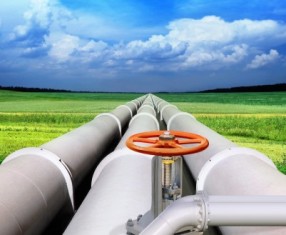Effective corrosion prevention methods for pipelines
The subject of pipeline corrosion is all over the news these days. Perhaps the San Bruno explosion in September has heightened my senses to the issue, or perhaps pipeline corrosion is getting its fair share of ink in the press. Just last Friday I learned that there was an incident related to pipeline corrosion in Provo, Utah. At an apartment complex, some residents had been without heat or hot water for over a week because the gas line was shut off because of pipeline corrosion. The line is almost 40 years old.
Can you imagine a week without hot water and heat? What an inconvenience that must have been for the occupants … but how fortunate the situation did not escalate to an incident like the one in San Bruno.
Successful methods to prevent corrosion in pipelines
Unprotected pipelines corrode, no matter where the pipeline is. If it’s buried underground, above ground or in water, it’s going to deteriorate. As 60% of our nation’s transmission lines approach their life expectancy of a half century, we’re hearing more and more about pipeline failures. This should not be a surprise. Without implementing safety measures and having a corrosion control program, corrosion makes transporting hazardous material unsafe.
A successful corrosion control program is a never ending practice. It begins with an effective design and installation of the pipeline, executing corrosion control methods, and maintaining and monitoring the lines. Here are some of the methods NACE (National Association of Corrosion Engineers) recommends as part of a successful corrosion control program to protect oil and gas pipelines. With the exception of the last method, three of the four can be used on existing pipelines.
- Cathodic protection (CP) is a method to control corrosion by using a direct electrical current which neutralizes external corrosion typically associated with metal pipe. It is generally used when a pipeline is buried underground or in water. When executed on a new pipeline, cathodic protection can prevent corrosion from the start. On an older pipeline, cathodic protection can impede existing corrosion of the line.

- Coatings and linings are applied to pipelines whether above or below ground and often are used in combination with cathodic protection. Another application that is currently getting some attention is the use of fiber-reinforced polymers to strengthen and repair pipelines.
- Corrosion inhibitors are compounds which when added to the upstream pipeline can inhibit the corrosion of carbon and low-alloy steels which are commonly used because of their cost effectiveness.
- Pipeline material used will also significantly influence corrosion. Using materials like plastic, stainless steel or special alloys can enhance the lifetime of the pipeline, while steel or steel reinforced concrete is subject to corrosion.
While the nationwide corrosion issue may seem a bit daunting, I thought it was a good time to discuss some technology we currently have which can indefinitely extend the structural life of our pipelines.
Reference: http://www.lincenergysystems.com/linc-energy-blog/entry/effective-corrosion-prevention-methods-for-pipelines
Tidak ada komentar:
Posting Komentar